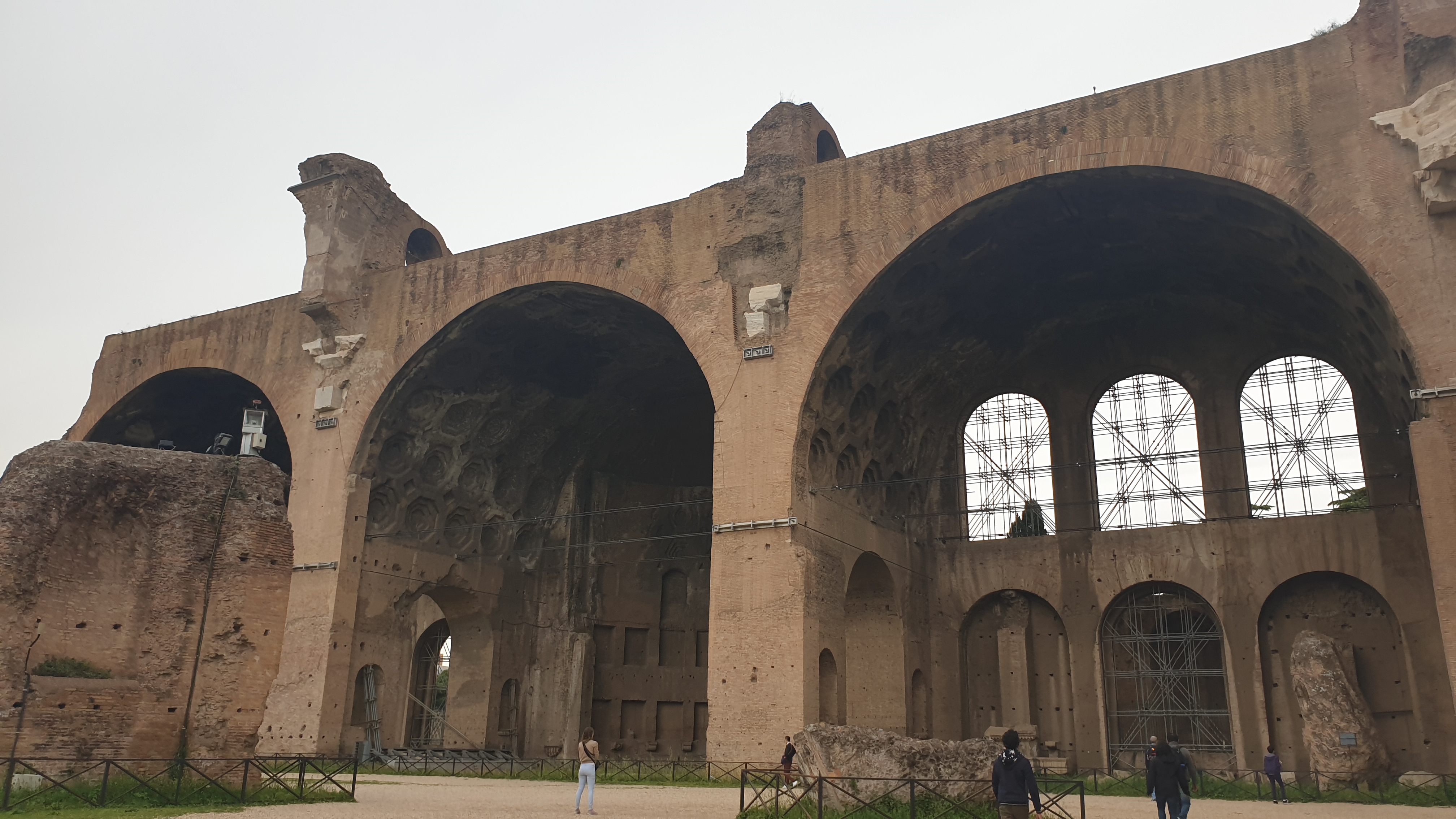Ancient Roman architecture
Ancient Roman architecture is a pivotal aspect of world history and architecture, reflecting the Roman Empire's vastness, power, and cultural influence from around the 8th century BC through the 5th century AD. This architectural legacy is marked by innovations in engineering, design, and urban planning that have influenced building practices for centuries.
Origins and Influences[edit | edit source]
Ancient Roman architecture was heavily influenced by the Etruscans, the predecessors of the Romans in Italy, and the Greeks. From the Etruscans, the Romans inherited a love of ornate decoration and engineering skills, particularly in working with arches and constructing complex water systems. Greek influence is evident in the use of Doric, Ionic, and Corinthian orders, but the Romans were innovative in adapting these elements to meet their own needs and tastes.
Architectural Innovations[edit | edit source]
One of the most significant Roman contributions to architecture is the development of concrete. This material allowed for the creation of new architectural forms, such as the dome and the vault, enabling the construction of large and complex structures like the Pantheon and the Colosseum. These buildings not only showcased the empire's architectural innovation but also its engineering prowess.
The Arch and the Vault[edit | edit source]
The arch and the vault were critical in the development of Roman architecture. The arch allowed for the construction of large openings without compromising the structure's stability, leading to the development of monumental buildings such as aqueducts and bridges. The vault, particularly the barrel and groin vaults, enabled the construction of expansive and durable roofs.
Urban Planning[edit | edit source]
Roman urban planning is another area where the empire's architectural legacy shines. Cities were designed with a focus on functionality, hygiene, and aesthetics. The layout of a typical Roman city included straight streets that intersected at right angles, public buildings like baths, theatres, and forums, and a sophisticated aqueduct system that supplied fresh water.
Key Structures[edit | edit source]
Several structures exemplify Ancient Roman architectural achievements:
- The Pantheon, renowned for its massive dome and oculus, exemplifies Roman concrete's capabilities and remains the world's largest unreinforced concrete dome. - The Colosseum, an iconic symbol of Rome, showcases Roman engineering through its complex system of vaults and its ability to host tens of thousands of spectators. - Roman aqueducts, like the Pont du Gard in France, highlight the empire's engineering skills and the importance of water management.
Legacy[edit | edit source]
The legacy of Ancient Roman architecture is vast, influencing the development of Western architecture through the Renaissance and beyond. Roman techniques and styles were revived and adapted in various architectural movements, including Neoclassicism. Today, Roman architectural principles continue to inform modern architecture, particularly in the use of spaces, structural techniques, and the emphasis on functionality and aesthetics.
This article is a architecture-related stub. You can help WikiMD by expanding it!
Search WikiMD
Ad.Tired of being Overweight? Try W8MD's physician weight loss program.
Semaglutide (Ozempic / Wegovy and Tirzepatide (Mounjaro / Zepbound) available.
Advertise on WikiMD
|
WikiMD's Wellness Encyclopedia |
| Let Food Be Thy Medicine Medicine Thy Food - Hippocrates |
Translate this page: - East Asian
中文,
日本,
한국어,
South Asian
हिन्दी,
தமிழ்,
తెలుగు,
Urdu,
ಕನ್ನಡ,
Southeast Asian
Indonesian,
Vietnamese,
Thai,
မြန်မာဘာသာ,
বাংলা
European
español,
Deutsch,
français,
Greek,
português do Brasil,
polski,
română,
русский,
Nederlands,
norsk,
svenska,
suomi,
Italian
Middle Eastern & African
عربى,
Turkish,
Persian,
Hebrew,
Afrikaans,
isiZulu,
Kiswahili,
Other
Bulgarian,
Hungarian,
Czech,
Swedish,
മലയാളം,
मराठी,
ਪੰਜਾਬੀ,
ગુજરાતી,
Portuguese,
Ukrainian
Medical Disclaimer: WikiMD is not a substitute for professional medical advice. The information on WikiMD is provided as an information resource only, may be incorrect, outdated or misleading, and is not to be used or relied on for any diagnostic or treatment purposes. Please consult your health care provider before making any healthcare decisions or for guidance about a specific medical condition. WikiMD expressly disclaims responsibility, and shall have no liability, for any damages, loss, injury, or liability whatsoever suffered as a result of your reliance on the information contained in this site. By visiting this site you agree to the foregoing terms and conditions, which may from time to time be changed or supplemented by WikiMD. If you do not agree to the foregoing terms and conditions, you should not enter or use this site. See full disclaimer.
Credits:Most images are courtesy of Wikimedia commons, and templates, categories Wikipedia, licensed under CC BY SA or similar.
Contributors: Prab R. Tumpati, MD




